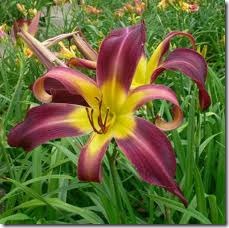Daylilies add color and interest to the gardens of North Florida, according to the North Florida Daylily Society. These plants adapt well to the various soil conditions in the area, making them an ideal choice for the North Florida region where soils range from sandy to clay-like. With proper care and pest control, daylilies will flourish.
Blooming Season
-
According to the North Florida Daylily Society, most daylilies in the region reach their peak blooming season in May. Daylilies typically reach a second blooming season during July and August. Blooms only last a single day, but daylilies feature stalks with a clump of buds. Each clump of buds provide steady blooms over several weeks.
Planting Tips
-
By nature, daylilies are hardy plants ,withstanding drought conditions, salt spray and neglect. The climate in North Florida is often hot and humid throughout the summer, and their hardiness makes daylilies attractive for flower gardens. Keep the plants as healthy as possible by planting daylilies in an ideal spot. Daylilies thrive in an area that receives at least six to eight hours of sunlight daily, according to the Florida Gardener website. Add a water-holding gel to the soil to conserve moisture during drought season. Though daylilies are drought resistant, they require regular watering when young plants are becoming established in the garden. According to the North Florida Daylily Society, it is best to plant daylilies in the early fall, which allows the flowers to establish roots prior to winter frosts.
Pests
-
In North Florida gardens, the biggest threats to daylilies are aphids, spider mites and thirps, according to the North Florida Daylily Society. Aphids are small, bright yellow or bright green insects that may be found on the plant’s leaves and stalks. The most common evidence of aphid infestation is foliage turning yellow. Flush aphids off the plants with a strong spray from a water hose. Soapy water sprayed on daylilies also helps keep aphids at bay. Spider mites are about the size of a period and difficult to see. They spin webs in the foliage and cause leaves to develop spots. Control is difficult because the mites reproduce very quickly. Treat with an insecticidal soap and horticultural oil. Thrips, tiny insects with narrow black or gray bodies and wings, cause the most damage to daylilies. These pests eat buds, cause cork-like damage to appear on stalks and cause flowers to become misshapen. Treat thirps with a horticultural soap spray.
Maintenance Tips
-
Basic maintenance throughout the growing season will encourage daylilies to bloom and stay healthy. Trim off dead blooms to encourage future buds to bloom, suggests the Florida Gardener website. Fertilize twice a year with 10-10-10 fertilizer. Cover the soil with organic mulch or composted leaves. Every few years, uproot daylilies and pull clumps apart by hand to prevent overcrowding. Replant the separated clumps.
Interesting Facts
-
Daylilies are edible, making them an ideal plant for those who wish for their flower and vegetable gardens to provide food for the home. Gather daylilies and separate buds, flowers and tubers. The Atlantic website suggests sautéing buds and petals in a bit of butter to create a floral side dish. According to the North Florida Daylily Society, daylilies come in all colors of the rainbow except pure white and blue.


Deprecated: strpos(): Passing null to parameter #1 ($haystack) of type string is deprecated in /home/agriviek8Qv/agriviet.net/public_html/wp-includes/comment-template.php on line 2522